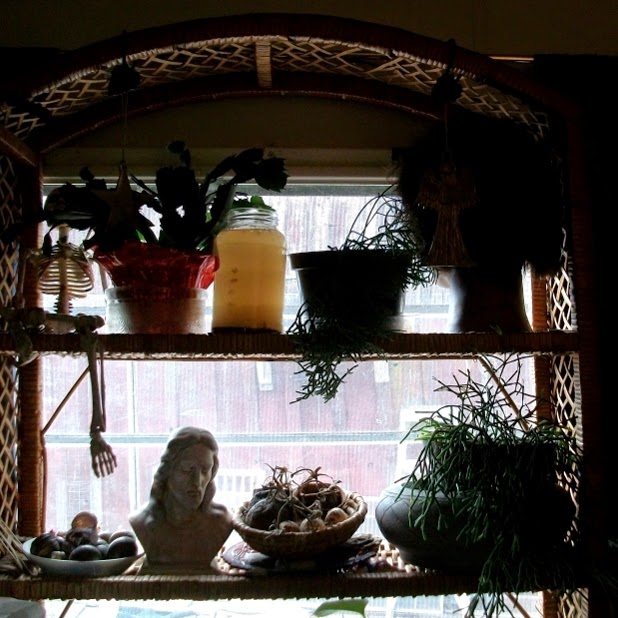Last year, the field next to my house was ploughed and I was delighted! On walk-about I found all kinds of treasures such as pottery shards from nearby Buena Vista Pottery (long gone), broken terra-cotta irrigation pipes, small animal bones, an old yellow brick, and dirt clods with deep red streaks running through. It is nearly time for the plough to come again and I have brand new mud boots by the door waiting to be broken in.
During my research, I found the most wonderful book and I recommend it for anyone serious about making their own earth colours. I found mine on the website for Powell's Books in Portland, Oregon. I was in the area so did my homework and had a shopping list. I love that place! It is Earthen Pigments by Sandy Webster. The author does workshops, but since I live so far away, the book is great!
 |
|
Field dirt –
note the reddish streaks
in some of the clods
|
 |
|
I sifted the dirt through a food dryer
screen.
I think I could have skipped this step
as I don't think it
affected the results at all.
|
 |
|
My first batch in a gallon pickle jar.
Sadly, it got broken so now I use several smaller food jars.
|
 |
|
Pouring off the water. The remaining
pigment stays in the bottom.
|
 |
|
Mud spread out on parchment paper.
|
 |
|
It got messy!
Remember mud pies in an
Easy Bake oven?
|
 |
|
At this point the stuff was very easy
to work with in a mortar and pestle.
|
 |
|
The results look quite dismal grey... a
taupe color.
But as I will show in another post,
the rich and
reddish browns come out
when mixed into paints with base materials.
|
 |
|
After grinding to a powder,
I sifted out the chunks and ground them again. (No, I didn't wear a dust mask but I should have and will next time for sure). |
Follow-up note: I used this in a project... please see My Prince!




Love how you explain your art. It could be as a teacher or just for a layman like myself to understand. Loved your PRINCE too.
ReplyDeleteThank you! I try to explain things to people as I would want done to me. Thorough yet simple. Thanks Prince says... ribbit!
DeleteLove seeing the step by step process and how much you love the exploration and experimentation too. This must be so satisfying also to actually gather the materials from nature and turn them into useable additions to your art/painting process. Very fascinating.
ReplyDeleteThank you Beverley! Yes it is one of my favourite parts.
DeleteThis is so amazing! I love how you can find the hidden beauty in what most people would just walk right past.
ReplyDeleteThank you! or in this case... walk on. :)
DeleteThank you for sharing your process. It really adds such a deep appreciation for your work.
ReplyDeleteThank you Shannon!
Delete